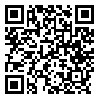Volume 4, Issue 12 (8-2014)
2014, 4(12): 307-319 |
Back to browse issues page
Download citation:
BibTeX | RIS | EndNote | Medlars | ProCite | Reference Manager | RefWorks
Send citation to:



BibTeX | RIS | EndNote | Medlars | ProCite | Reference Manager | RefWorks
Send citation to:
Majidi M M, Dehghan Kouhestani R, Veisipoor A. Direct and Indirect Selection for Forage Yield and Its Components in Sainfoin under Normal and Drought Stress Conditions. Journal of Crop Production and Processing 2014; 4 (12) :307-319
URL: http://jcpp.iut.ac.ir/article-1-2162-en.html
URL: http://jcpp.iut.ac.ir/article-1-2162-en.html
College of Agric., Isf. Univ. Technol., Isfahan, Iran , majidi@cc.iut.ac.ir
Abstract: (4829 Views)
Selection based on indices is an effective method for breeding complex traits. To assess the efficiency of different selection methods, twenty one accessions of Sainfoin (Onobrychis viciifolia) were evaluated in two environments including drought stress and non-stress conditions according to a randomized complete block design with three replications in 2010. In this study, the selection indices of Smith-Hazel and Pesek-Baker were determined based on the percentage of dry matter yield, stem percent, plant height and number of stem per plant under both conditions. Also response to selection and relative selection efficiency were estimated for studied traits and dry matter yield. The highest estimated selection efficiency for genetically improvement of dry matter yield was obtained via selection for stem percent and number of stem per plant. Therefore, these traits can be used as an appropriate selection criterion for improvement of forage yield. In Smith-Hazel indices under normal environment plant height and under stress environment stem percent had the highest gain, while in Pesek-Baker index, under both moisture conditions percentage of dry matter yield had the highest gain. The results indicated that Smith-Hazel index 1 had the most selection efficiency and could be used in sainfoin breeding programs.
Send email to the article author
| Rights and permissions | |
 | This work is licensed under a Creative Commons Attribution-NonCommercial 4.0 International License. |






